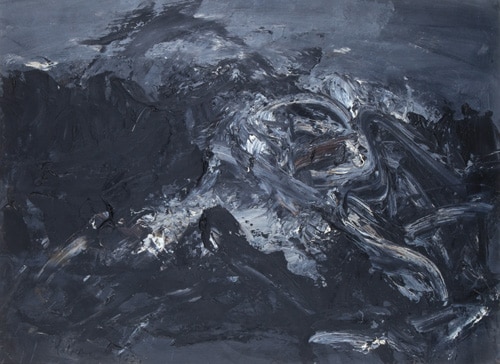
Stacha Halpern was bourn in Poland in 1919 and immigrated to Australia in 1939 following the Nazi occupation of Poland. He lived in Melbourne and in 1951 left to travel through Europe where he began experimenting with expressionistic portraiture.
Stacha Halpern’s paintings are not easy to forget, he would bound them with energy and verve that didn’t stop until they were completed. They leave an indelible impression in one’s mind, and love them or hate them, one never forgets them.
Halpern returned to Australia in 1966, but the reception his work received was disappointing. The scrap between the abstractionists and antipodeans was still in play and despite a sucessful career in France, the Australian public wasn’t ready for a naturalised expatriate whose images seemed to have a foot in both camps – figurative with the antipodeans and expressionist with the others.
Stan Rapotec another émigré would say of his own career, after he was mistaken for an overnight sensation”… I firmly and strongly believe now, that to build up an artist in any field you need twenty years of struggle – struggling, battling, performing, experimenting, exercising and, yes, exposing oneself in one’s work to the full brunt of criticism.” Halpern had already served an apprenticeship in Paris – he had achieved prominence and success there in just fifteen years but that didn’t count in Australia, he still had his time to serve and one can be confident in saying that he would have given the time, as above all else including his Polish birthplace and his European successes he considered himself to be Australian.
Sorry to say he didn’t have another twenty years to give and died through heart disease in 1969 – three years after his return.
Halpern’s position and effect in the International art scene of the 60’s is finally being respected in Australia. A PArisian art critic referred to him as an example of what young French artists should aspire to, he hung in galleries along side Rothko, Guston and Frankenthaler. His works were exhibited at group and solo shows in Paris, Rome, New York, Amsterdam, Basle and Milan. And unlike many of those that preceded him to Europe he was to heave a real effect in the art scene, particularly in Paris.
It would take almost three decades before Australia could step up to the mark, even though Halpern had champions along the way, desperately wanting to help others to see.
